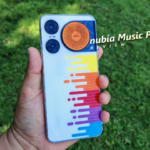You probably know by now that molarity is the the ratio of the amount of the solute in moles to the volume of the solution. That is moles of solute/volume of solution.
Following this description of molarity, its unit is moles per liter or mol/L.
For example, if 5 grams of salt or sodium chloride is dissolved in 0.5 Liter of distilled water, the molarity is calculated as follows:
Step 1. Identify the given and the unknowns. The situation says there is 5 grams of NaCl which is the mass and 0.5 L of water which is the volume of the solvent. When salt is dissolved in water, the additional volume is negligible that the volume of the solution can be confidently stated as also 0.5 Liter.
Hence, the given are mass of the solute and volume of the solution and the unknowns are the moles of the solute and of course the molarity of the solution.
Step 2. Calculate the number of moles of the solute. The solute in the situation is 5 g of salt or NaCl. The molecular mass of NaCl is 58 g.
5 g NaCl x 1 mole NaCl = ? mole NaCl
58 g NaCl
5 g NaCl = 0.09 mole NaCl
Step 3. Use the molarity formula to calculate the molarity of the solution.
Molarity = moles of solute
volume of solution
Molarity = 0.09 mole NaCl
0.5 L solution
Molarity = 0.18 M
Step 4. State your answer in a sentence. Your teacher might not require you to do this but it is a good practice to always write a sentence that states the answer to the problem. Just like this:
Therefore, the salt in water or brine solution is 0.18 Molar.
Now, it’s your turn to solve some Molarity Practice Problems. Don’t forget the four steps that I’ve listed above.
1. Thirty grams of sodium chloride is dissolved to make a 2.5 liter brine solution. What is the molarity of this solution? Brine is another term for a salt solution.
2. A chemist prepares a 5 liter solution by dissolving 4 grams of copper(I) sulfate in water. What is the molarity of the solution?
3. What is the molarity of a 500 mL solution containing 3 grams of KCl? Remember to convert mL to L.
4. One gram of lithium hydroxide is dissolved to make a 60 mL solution. What is the molarity of this solution?
5. One and a half kilograms of calcium bromide is needed to make a 30 liter solution. What is the molarity of such solution?
Answers to the Molarity Practice Problems
1. The brine solution is 0.21 M.
2. The chemist prepares a 0.005 M copper sulfate solution.
3. The potassium chloride solution is 0.08 M.
4. The molarity is 0.69.
5. Such solution is 0.25 M.
There you have the definition of molarity, steps in solving for the molarity of a solution and some practice problems with their answers.
It’s now up to you to practice solving and master the steps in solving the molarity of a solution.
If you have additional questions about molarity or about chemistry in general, don’t hesitate to contact me.













